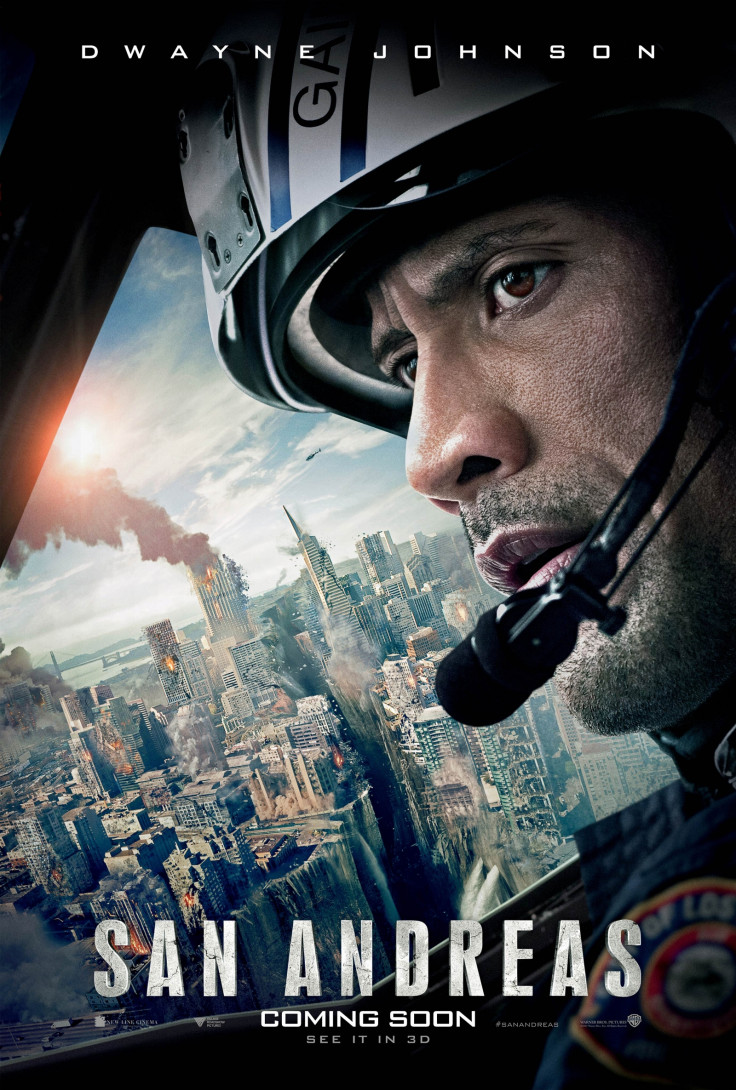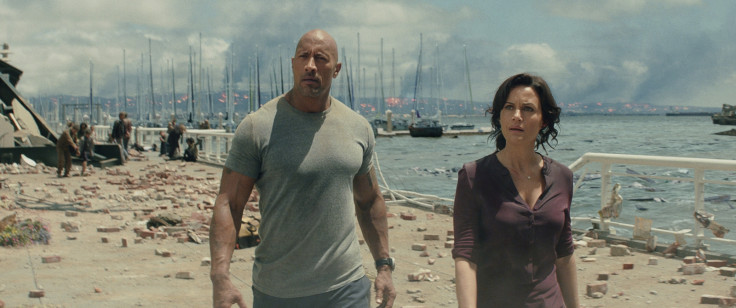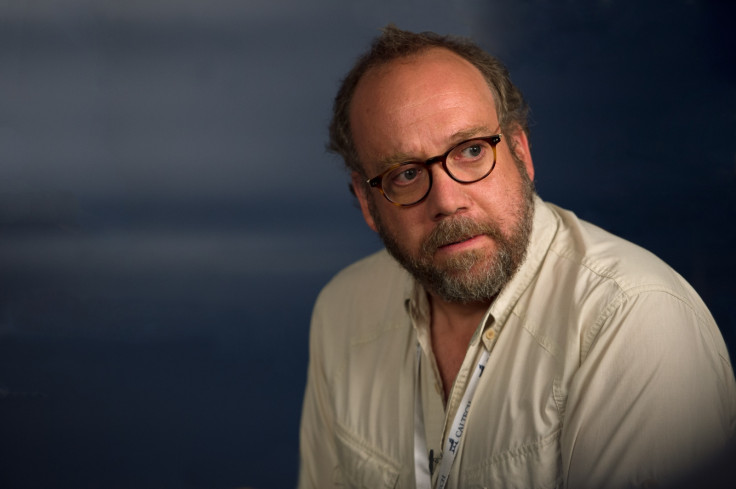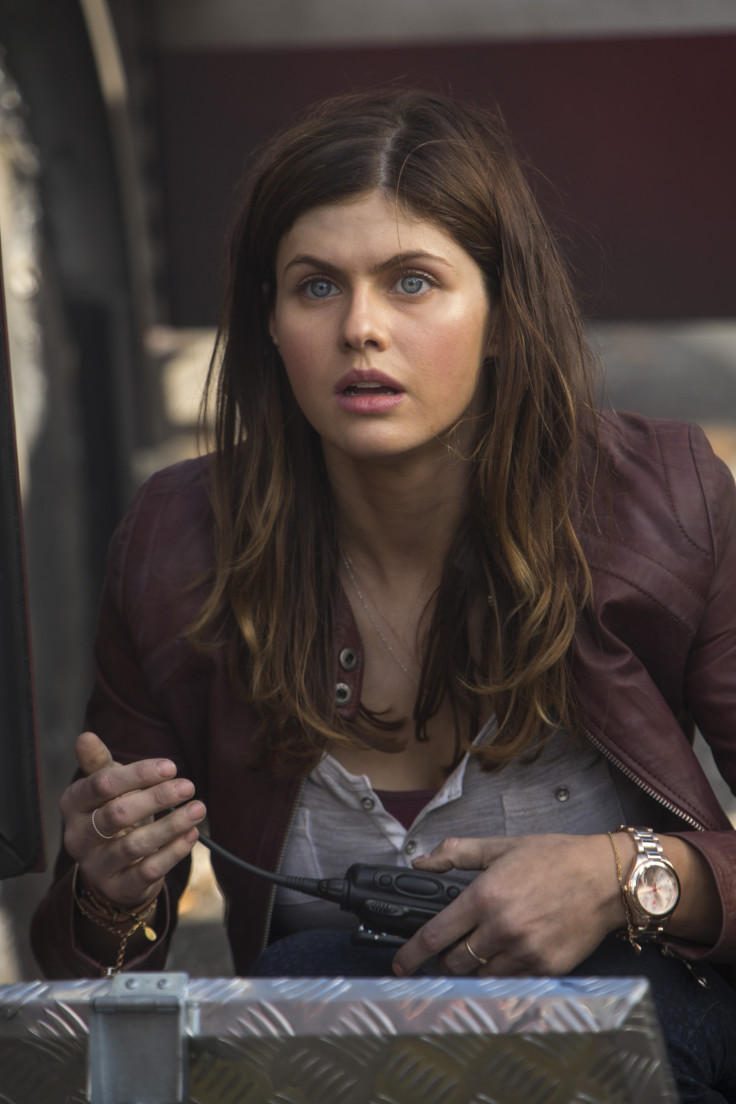San Andreas: Seismologists applaud Hollywood blockbuster despite dubious science
Experts have given the thumbs up to San Andreas, the latest Hollywood blockbuster about a natural disaster staring Dwayne Johnson, Carla Gugino and Paul Giamatti – despite the dubious science behind it.
Lucile Jones, science advisor for risk reduction at the US Geological Survey (USGS), said the movie was not entirely inaccurate and that she enjoyed it, despite not expecting to.
"The trailers show seismological principles that are completely distorted, but one doesn't go to movies to study seismology," she told IBTimes UK.
"As long as people don't make the mistake of thinking this is a seismology course, it's an enjoyable summer over-the-top blockbuster. All of us got out of it smiling and everybody in the group was pleasantly surprised because we had been cringing at the trailers."
Similarly Thomas H Jordan, director of the Southern California Earthquake Centre, also told IBTimes UK: "It's easy to be a grumpy old scientist and go over all the details that aren't right, but I enjoyed the film and its spectacular special effects. It's a gripping adventure story that kept me on the edge of my seat."
However, they also pointed out there are several problems with the film ... and a few things it got right.
The size of the earthquake

This is a big NO. In the film, a magnitude 7.1 earthquake triggers a 9.1 in Los Angeles and a 9.6 in San Francisco. Realistically, this just cannot happen. The largest earthquake at the San Andreas Fault would be around a magnitude 8. This is because of the geology of the fault, Jones and Jordan said.
"There's only one type of fault that produces these very biggest earthquakes and we don't have that here in southern California," Jones said. "Here in California we have what you call a transform fault where LA moves towards San Francisco and that fault is vertical into the earth and we're moving sideways."
For earthquakes of magnitude 9 or above you need the fault to be flatter – almost horizontal – so at the subduction zones you have one going underneath the other: "Then you can get a really large area in the hot part of the crust. They have so much more area to work with. That lets them get bigger. The magnitude 9.5 in Chile, for example – those are places where the fault is almost flat and we don't have those horizontal faults in California.
"So [the filmmakers] just pulled a little geological sleight of hand and moved a Japan-type fault under California, but that part we laugh at."
However, one of the parts the film does get right is how the initial earthquake triggers the others: "That part is realistic," she said. You need one earthquake to trigger another. When close-by, they are known as aftershocks, but when it is further along the fault line, they are trigger earthquakes.
"In the movie you have a 7.1 in Nevada trigger a 9.1 in Los Angeles, which triggers a 9.6 in San Francisco. The numbers are an exaggeration, but if you scale it down to the size of earthquakes that could happen, that's pretty reasonable. We had a 7.3 here in Southern California in 1992 and the next day there was a 5.2 in Nevada – so the same sort of locations as they're talking about in movie.
"That part is realistic. It's just the numbers are over the top. And the film is over the top. It's Hollywood."
A chasm in the Earth will not open up – and it would not be felt on the east coast
In the film, Ray (Johnson) almost drives into a huge chasm that has opened up on a highway on route to San Francisco. Emma (Gugino) asks "what is that", to which the Rock replies "San Andreas" (saying the name of the movie in the movie in cheesy Hollywood tradition).
Unfortunately this would not happen. "When this type of fault ruptures, one side moves sideways relative to the other and the way faults work is that they can't open up a big void," Jordan said. "They don't crack apart in that way. So that's unrealistic."
"That was one part we all broke out laughing at that part," Jones added. "If the fault could open there would be no friction at the surfaces, and it's the friction that causes the earthquake. When one moves past the other, if there wasn't friction, it could just slide right on past. If a fault could open up you couldn't have an earthquake."
Jordan said the earthquake would not be felt on the east coast as suggested in the film: "That's unlikely – the San Francisco earthquake – the biggest historical earthquake in California was barely felt outside of California."
He also noted that the buildings would not fall down in the same way they do in the film, but the non-structural damage – like windows smashing – could cause a lot of casualties.
And there would be no tsunami

One of the stand-out moments of trailer is the biggest wave there ever was wiping out the burning city. Again, this is a Hollywood lie. Tsunamis occur when the earth beneath the sea is displaced, causing a wave to propane away from the earthquake – as happened in Japan in 2011.
In San Andreas, most of the fault line is above ground and the earthquakes do not hit beneath the sea, so how the water turns into the wave is unclear ... and the filmmakers do not try to explain.
"The San Andreas Fault is a fault where one side moves sideways relative to the other," Jordan said. "It does go offshore from San Francisco, but because it ruptures in a side to side fashion it doesn't displace the sea, it doesn't cause a tsunami. The only possibility of getting a tsunami if you had a San Andreas earthquake would be if you had an underwater landslide triggered by the earthquake.
"But those would typically be rather small tsunamis – nothing of the magnitude pictured in the movie. In fact, we've never seen a tsunami as big as the one pictured in the movie. That's a pretty unrealistic part."
Jones noted the tsunami is also wrong because the water stays sitting in San Francisco, when in reality it would drain away: "It runs downhill and as soon as it comes in it goes back out. And the really dangerous thing about tsunamis are the currents, the moving water. That's what does the damage and pulls people out. And they're going through in this motorboat. But by that point in the movie, it's fine."
She concedes, however, that Johnson's character does recognise a tsunami is coming because he realises the water is being drawn outwards, as happens with real tsunamis.
You definitely cannot predict earthquakes

This is a major problem with San Andreas. In the film, Giamatti's character and his friend have come up with a way to predict earthquakes, so he knows the third and final one is coming and is able to warn people to get out of the city. He has found some way of predicting them through magnetic signals.
"If you accept the numbers, the level of shaking and the level of damage are all exaggerated, the rest of it isn't too bad. Except about the part of predicting it," Jones said. While some scientists thought they had found a way to use electric signals about 25 years ago, this has been discounted by most everybody but the filmmakers.
"There is a group that's trying to claim they see something but nobody else believes it. There was an unusual electrical signal that was seen just before the Loma Prieta earthquake in 1989, and so that's enough to make you look at it in more detail. When we did, we saw no reoccurrence – there are coincidences and it looks like that electric signal was a coincidence."
There are undiscovered faults though and another earthquake will happen
The first earthquake in the film comes from a previously unknown fault. "There are faults we haven't yet detected," said Jordan. However, he explained it would be very difficult to hide a fault near the Hoover Dam, because the rocks are well exposed so would be easy to spot. Instead, unknown faults are more likely to be found in the sedimentary valleys of Southern California, for example.
"There are faults that are hidden down there and we have to work hard to find them. Of course we're trying to do all that."
More importantly, it is not a matter of if but when California will experience another major earthquake.
"The basic premise of the movie that California can be heavily damaged by a big earthquake on the San Andreas is of course a correct premise," he said. "We will have big earthquakes on the San Andreas. But it won't be quite as big as shown in the movie."
The Pacific Plate is moving to the north west relative to the North America plate. The strain and energy have been building up constantly since it last broke and researchers now believe they could have a large earthquake almost any time.
"I wouldn't say its overdue – there are a lot of variables. They don't happen in a period pattern. In a simple model you might expect an earthquake to rupture and then the strain to build to the same point and rupture again. But these fault systems are much more complex than that they're not very periodic. It could be 50 years before we have a big earthquake on the San Andreas Fault, but it could also happen tomorrow."
Human reaction and public service message

The scientists both said the reactions of the people in the earthquake situation were realistic, while the public service message of drop, cover and hold is the same advice given to those living in earthquake danger zones – a message reiterated throughout the film.
"One of the things the movie is good at is in terms of how people act during the movie and react to the situation," said Jordan. "Typically they act pretty responsibly and I think there's more than one case where they say drop cover and hold on, which is what we recommend people do during an earthquake. The movie is pretty good at that.
"I actually met with the director and the producer to give them some advice. They were very committed to trying to use it as a public education device. The scenario is a bit over the top in that Paul Giamatti's character says something like 'we can't prepare for this one' – that's not quite the right message we would like to give out. People can prepare for earthquakes and we want them to do so."
Jones said it fitted in well with the community emergency response training people can get in California that help prepare them for a disaster – teaching them things like how to get supplies, feel confident and rescue those in danger.
"Part of the reason I liked it is that it's sort of like we were judging it as a public service announcement for our community," she said. "The hero of course is the Rock, then his daughter is off on her own. And she's been trained and is really competent, she knows how to do first aid, she carries a flashlight at all times, she knows where to get supplies. She's there being really competent and she wins the heart of a boy because of it. And I love that message."
Jordan said the filmmakers were trying to inform California residents about the possibilities of an earthquake: "They took some advice, and they put in the drop cover and hold references ... there are probably other details too ... But I told them it was too big of an earthquake."
Jones added: "I've got to take it down for being so over the top. I'd give it seven or eight [out of 10]. The seismology is wrong ... [But] there are far worse movies that have been made."
© Copyright IBTimes 2025. All rights reserved.






















